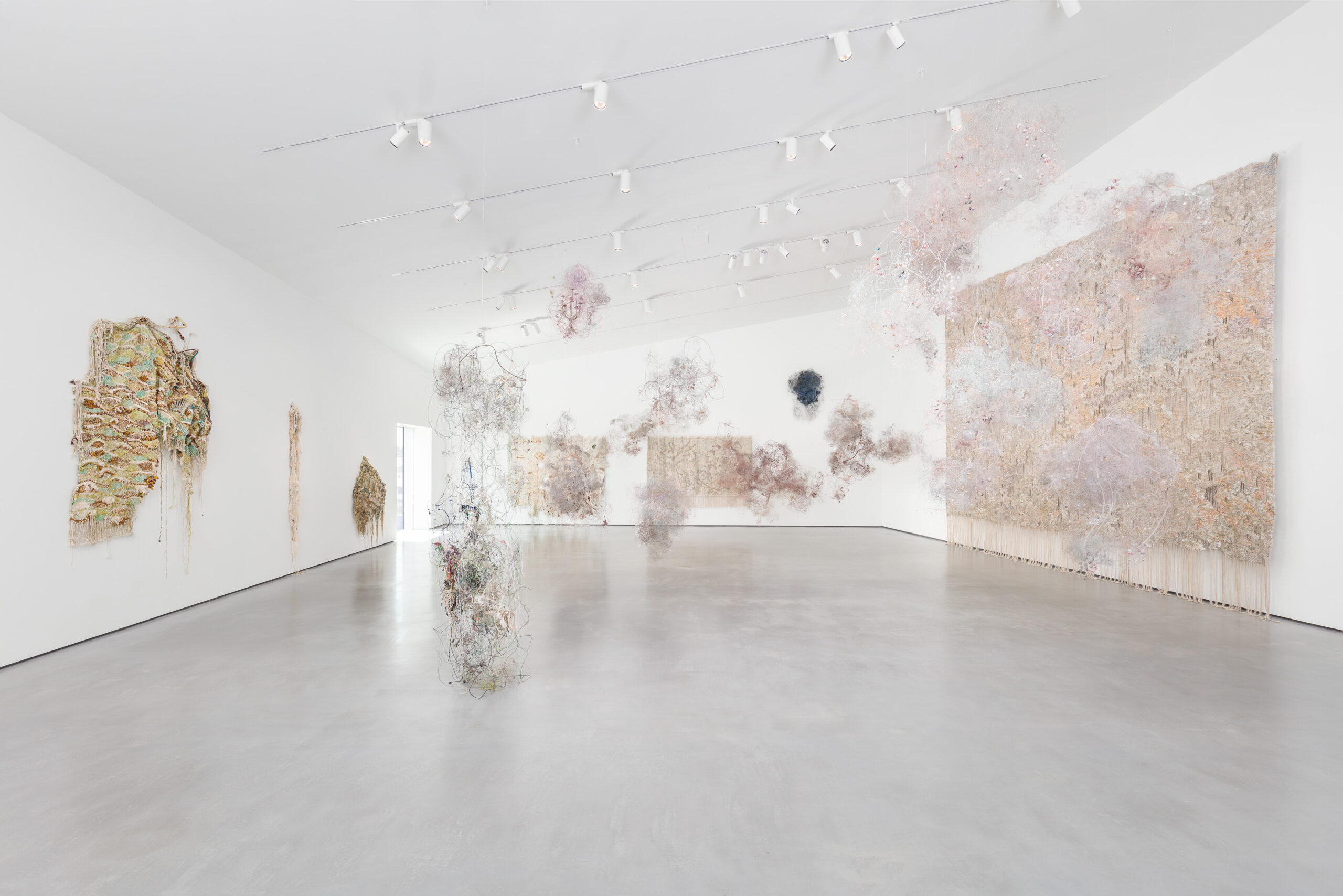Casey Kaplan

IGSHAAN ADAMS: WEERHOUD | THE HEPWORTH WAKEFIELD, UK
This June, The Hepworth Wakefield will open a solo exhibition by South African artist Igshaan Adams. Entitled Weerhoud, meaning ‘Withheld’ in Afrikaans, the exhibition examines the impact of lived experiences and traumas on the human psyche, with a particular emphasis on the healing potential of movement. Adams will present three new commissions created specifically for the exhibition, consisting of two tapestries and one of his largest immersive ‘cloud’ installations to date. These new works will be exhibited alongside a selection of existing sculptures and textile pieces. Weerhoud presents an exciting development in Adams’ practice, shifting his focus from domestic spaces and landscapes to the body.
Igshaan Adams was born in 1982 in Bonteheuwel, a suburb of Cape Town, South Africa. He grew up navigating the complexities of identity under apartheid’s racial classification system. His work spans a wide spectrum, encompassing intricate tapestries, expansive floor and wall-based installations, and immersive suspended sculptures. Adams’ work focuses on the nuanced remnants of human experiences, examining the impressions – ranging from the barely perceptible to the obvious – left by individuals within their homes, cities, natural environments, and their own bodies. His practice challenges apartheid’s attempt to confine people through racialised spaces, portraying the body as a catalyst for resistance against dominant structures. In 2018, he was awarded the prestigious Standard Bank Young Artist Award and subsequently featured in numerous exhibitions worldwide, going on to present his work at the 2022 Venice Biennale and the 2023 Bienal de Sa?o Paulo.
Adams’ new tapestries are derived from an ongoing series of dance workshops in which he collaborates with young dancers from the Garage Dance Ensemble, a dance group based in O’okiep within South Africa’s Northern Cape Province. The dancers are encouraged to intuitively interact with a large canvas placed on top of freshly painted linoleum, leaving behind traces and creating abstract paint marks with their bodies. The resulting ‘paintings’ are then used as inspiration to create tapestries. Adams considers the dancers’ bodies and movements as repositories of memories and trauma and is interested in recording in his tapestries a trace of their psyche. He understands ‘movement as a medium through which one can mend internal brokenness, even when clarity or memory is lacking.’ Adams views each resulting tapestry as deeply personal to the dancers, often naming them after specific performers. Adorned with beads, chains, stones, shells, ribbons and ropes, some areas are deliberately left unwoven, revealing negative space, further evoking a sense of fragmentation or incompleteness.
Adams’ new cloud sculpture will offer visitors an immersive experience, allowing them to walk through the cloud as they navigate the exhibition space. This cloud installation will integrate wires, beads, and various found objects, such as shower heads, lampshades, and chairs. Through these elements, he reflects on how past experiences shape our present identities.
Igshaan Adams: Weerhoud will also revisit works created between 2014 and 2019, including some that have been deliberately degraded by time, showing signs of age and fragmentation. Some artworks, including Ameen (2018) have been exposed to the elements and damaged, with scars becoming integral to their composition. Others evoke a feeling of detachment from a larger whole, appearing vulnerable and open to influence. A tapestry titled, Bent (2018) Adams explains is ‘akin to a flower bending towards sunlight to absorb rays more effectively.’ These earlier works, along with the new commissions, ask what spaces, materials, and bodies can encompass; what remains held within us; and how we adjust to our environment, whether it be in positive or negative ways.
Igshaan Adams: Weerhoud is on view through November 3, 2024. For more information, please visit the Hepworth’s website.
Image: Mark Blower